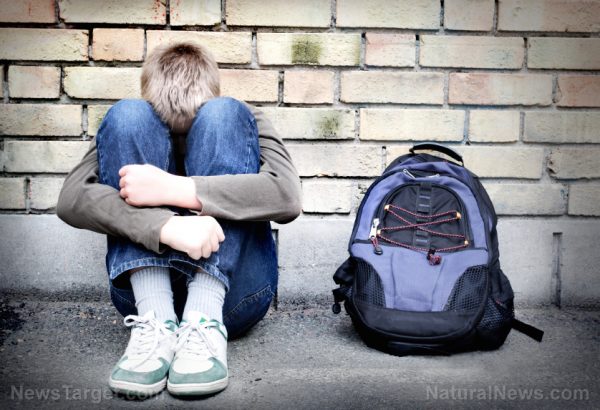Children who experience cyberbullying are twice as likely to self-harm or attempt suicide
06/07/2018 / By Carol Anderson

In this age of social media where majority of the youth seek validation through feedback from their peers, cyberbullying has become rampant as online platforms became an open field for bullies to target other people’s profiles.
A case study has proven that people under the age of 25 who have experienced cyberbullying are two times more likely to commit suicide. Moreover, those who perpetrate the wrongdoings are also vulnerable to harboring suicidal thoughts or behaviors and go through depression.
For over 21 years, researchers observed more than 150,000 children and young adults from 30 countries across the globe. According to the results, there is an urgent need to initiate better and more effective ways to prevent online harassment.
A 2016 study showed that 34 percent of 5,700 middle and high school students across the U.S. admitted to being victimized by cyberbullies. Twenty-two percent of the respondents experienced receiving mean or hurtful comments online while 20 percent became topics of rumors that circulated on social media sites.
These numbers are truly alarming as statistics on suicide among young people continue to grow. Taking one’s own life has become the top three leading cause of death among the youth. Roughly 4,600 lives are lost each year based on these figures.
Professor Ann John of Swansea University Medical School said schools must include preventive strategies on cyberbullying in their anti-bullying campaigns. She suggested initiating online group support for victims, teaching students how to appropriately intervene on cyber harassment cases, and how to seek the help of the authorities when they come across such incidents.
“Suicide prevention and intervention is essential within any comprehensive anti-bullying program and should incorporate a whole-school approach to include awareness raising and training for staff and pupils,” John concluded.
Other recommendations from the systematic review study were to: Raise awareness on cyberbullying, promote safe internet use, encourage mental health experts to include cyberbullying during discussions, and screen both victims and perpetrators for possible mental problems.
The findings also highlighted the importance of showing concern not just towards the victim but also towards the bully. Furthermore, the study concluded that males have a higher risk of feeling depressed or having suicidal thoughts and behaviors.
In addition, it has proven that those who were victimized by cyber bullies are less likely to report it or ask for help as compared to those who were harassed by other means if bullying.
Know the signs of suicidal behavior to help prevent it
- Becoming aloof and growing more withdrawn from peers;
- Always appearing to be sad;
- Less interest in favorite hobbies and/or activites;
- Having problems with sleeping and eating;
- Shows interest in death or dying;
- Shows reckless behavior and has little regard for safety;
- Speaks as if he or she is saying goodbye;
- Expresses feeling of giving up;
- Letting go of favorite possessions; and
- Self-harm.
Ways to help someone with suicidal behavior
- Don’t ignore a person showing signs of depression/suicidal behavior.
- Immediately but carefully get them to seek help.
- Secure all things which can be used as tools in committing suicide.
- Encourage children to talk openly about bullying.
- Establish a safe environment where children can open up.
- Coordinate with school teachers to monitor a child’s behavior in school.
- As parents, try to be part of your child’s group of friends in social media sites to monitor possible cyberbullying.
- Know where to seek help when your child begins to show some signs of suicidal behavior.
Sources include:
Tagged Under: adolescents, Brain, bullies, bullying, children's health, cyberbullying, depression, internet, intervention, mental health, Mind, mind body science, online harassment, prevention, safe internet use, self-harm, Social media, suicidal behavior, suicidal thoughts, suicide, suicide rate, technology, teen health, Teens, young adult




















